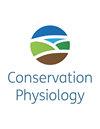The effects of marine heatwaves on a coral reef snapper: insights into aerobic and anaerobic physiology and recovery
IF 2.5
3区 环境科学与生态学
Q2 BIODIVERSITY CONSERVATION
引用次数: 0
Abstract
Marine heatwaves (MHWs) are increasing in frequency and intensity. Coral reefs are particularly susceptible to MHWs, which cause mass coral bleaching and mortality. However, little is known about how MHWs affect coral reef fishes. Here, we investigated how MHWs affect the physiology of a coral reef mesopredator, Lutjanus carponotatus. Specifically, we exposed mature adults to two different MHW intensities, +1°C (29.5°C) and + 2°C (30.5°C) and measured physiological performance at 2 and 4 weeks of exposure and at 2 weeks post-exposure. At these time points, we measured oxygen consumption at rest and after a simulated fishing capture event, recovery time, excess post-exercise oxygen consumption (EPOC) and associated biochemical markers in the blood (baseline lactate, post-capture lactate, glucose, haemoglobin levels and haematocrit proportion). We found that 2 weeks of exposure to MHW conditions increased resting oxygen consumption (+1°C = 23%, +2°C = 37%), recovery time (+1°C = 62%, +2°C = 77%), EPOC (+1°C = 50%, +2°C = 68%), baseline lactate (+1°C = 27%, +2°C = 28%), post-capture lactate (+1°C = 62%, +2°C = 109%) and haemoglobin levels (+1°C = 13%, +2°C = 28%). This pattern was maintained at 4 weeks of exposure except for post-capture lactate which was reduced (+1°C = −37%, +2°C = 27%). In combination, these results suggest a greater reliance on anaerobic glycolysis to maintain homeostasis in MHW conditions. At 2 weeks post-exposure, when compared to control fish, we found that capture oxygen consumption was increased (+1°C = 25%, +2°C = 26%), recovery rate was increased (+2°C = 38%) and haemoglobin was still higher (+1°C = 15%, +2°C = 21%). These results show that MHW conditions have direct physiological demands on adult coral reef snapper and ecologically relevant residual effects can last for at least 2 weeks post-MHW; however, individuals appear to recover from the negative effects experienced during the MHW. This provides new insight into the effects of MHWs on the physiological performance of coral reef fishes.海洋热浪对珊瑚礁鲷鱼的影响:有氧和无氧生理学及恢复的启示
海洋热浪(MHWs)的频率和强度都在增加。珊瑚礁特别容易受到 MHWs 的影响,MHWs 会导致大量珊瑚白化和死亡。然而,人们对海洋热浪如何影响珊瑚礁鱼类知之甚少。在这里,我们研究了MHW如何影响珊瑚礁中层食肉动物Lutjanus carponotatus的生理机能。具体来说,我们将成熟的成鱼暴露在两种不同的MHW强度下:+1°C(29.5°C)和+2°C(30.5°C),并测量了暴露2周、4周和暴露后2周的生理表现。在这些时间点,我们测量了休息时和模拟捕鱼后的耗氧量、恢复时间、运动后过量耗氧量(EPOC)以及血液中的相关生化指标(基线乳酸盐、捕鱼后乳酸盐、葡萄糖、血红蛋白水平和血细胞比容比例)。我们发现,暴露在 MHW 条件下 2 周,静息耗氧量(+1°C = 23%,+2°C = 37%)、恢复时间(+1°C = 62%,+2°C = 77%)、EPOC(+1°C = 50%,+2°C = 68%)、基线乳酸(+1°C = 27%,+2°C = 28%)、捕获后乳酸(+1°C = 62%,+2°C = 109%)和血红蛋白水平(+1°C = 13%,+2°C = 28%)均有所增加。除了捕获后乳酸盐降低(+1°C = -37%,+2°C = 27%)外,这种模式在暴露 4 周后得以保持。综合来看,这些结果表明,在 MHW 条件下,更依赖于无氧糖酵解来维持体内平衡。在暴露后两周,与对照组鱼类相比,我们发现捕获耗氧量增加(+1°C = 25%,+2°C = 26%),恢复率增加(+2°C = 38%),血红蛋白仍然较高(+1°C = 15%,+2°C = 21%)。这些结果表明,MHW 条件对成年珊瑚礁笛鲷有直接的生理需求,生态相关的残余影响可在 MHW 后持续至少 2 周;不过,个体似乎能从 MHW 期间经历的负面影响中恢复过来。这为了解中等强度暴雨对珊瑚礁鱼类生理表现的影响提供了新的视角。
本文章由计算机程序翻译,如有差异,请以英文原文为准。
求助全文
约1分钟内获得全文
求助全文
来源期刊

Conservation Physiology
Environmental Science-Management, Monitoring, Policy and Law
CiteScore
5.10
自引率
3.70%
发文量
71
审稿时长
11 weeks
期刊介绍:
Conservation Physiology is an online only, fully open access journal published on behalf of the Society for Experimental Biology.
Biodiversity across the globe faces a growing number of threats associated with human activities. Conservation Physiology will publish research on all taxa (microbes, plants and animals) focused on understanding and predicting how organisms, populations, ecosystems and natural resources respond to environmental change and stressors. Physiology is considered in the broadest possible terms to include functional and mechanistic responses at all scales. We also welcome research towards developing and refining strategies to rebuild populations, restore ecosystems, inform conservation policy, and manage living resources. We define conservation physiology broadly and encourage potential authors to contact the editorial team if they have any questions regarding the remit of the journal.
 求助内容:
求助内容: 应助结果提醒方式:
应助结果提醒方式:


